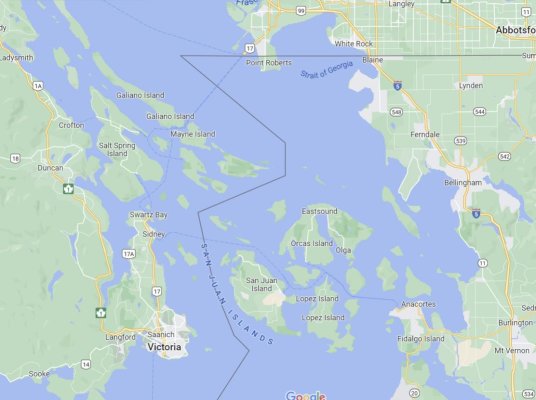God forbid we are encroached on, or assumed to be part of the US, or even part of the PNW, more than we already are.[/QUOTE]
Heavenly Days! Who, other than those who are geographically and historically challenged, could begin to consider the area of Vancouver Island and surrounds part of the US? We just returned from Sidney and Victoria where the difference in the way people we interacted with treat and talk to each other sets a very high bar.
However, there was one odd engagement at the Customs dock at VanIsle. As we were preparing to depart after being welcomed by the Officer on the phone, another boater approached my son (35) saying things like “they are trying to erase our boarders” and “the world as one big country”. He kept going on attempting to engage any of us as we very carefully departed. Until this post I had written the event off to a bit of a nut case. Now I’m beginning to wonder.
IMO, we are indeed “Children of a Common Mother”, and siblings with differences great and small.
Back to the original poster, you could make your course down Rosario Straight then west to Victoria and, as others have noted, as long as you don’t anchor, land or tie to another vessel, you are clear.

